How to Draw Pants Boy

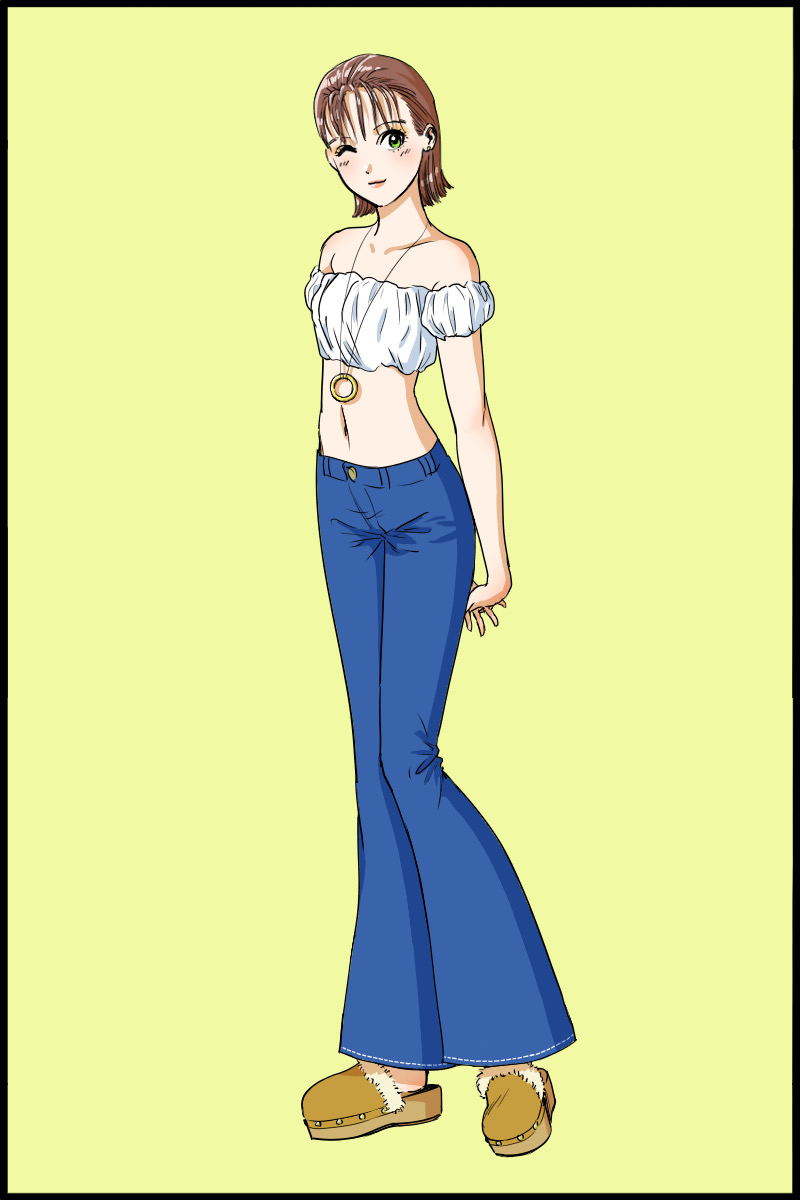
Pants are an essential item when drawing any kind of figure.
However it can become surprisingly difficult when you want to make them pose in various ways.
This article is for those who have such problems!
You can perfect a character just by drawing pants correctly.
1. Understand how pants are made
First of all, it is important to learn the structure of pants.
A pair of pants has a singular tube from the waist to the top of the crotch, and divides down into two tubes for the legs.
If you cut it in half lengthwise, you will see that only the leg area are more circular than the crotch area, as shown in the figure.
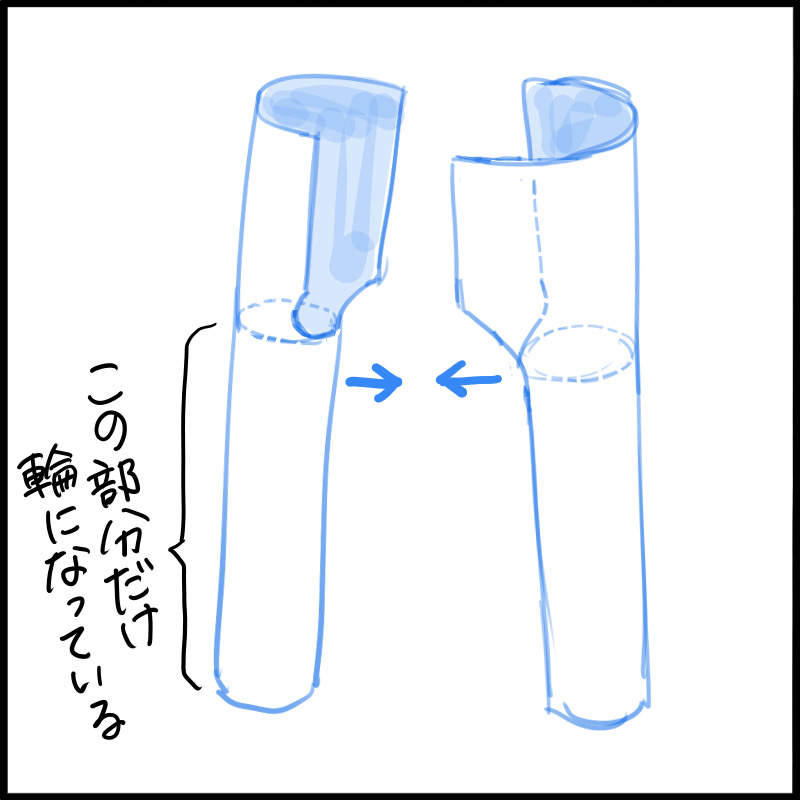
So in most cases pants are shaped in a complex way, sewn together at the belly and buttocks.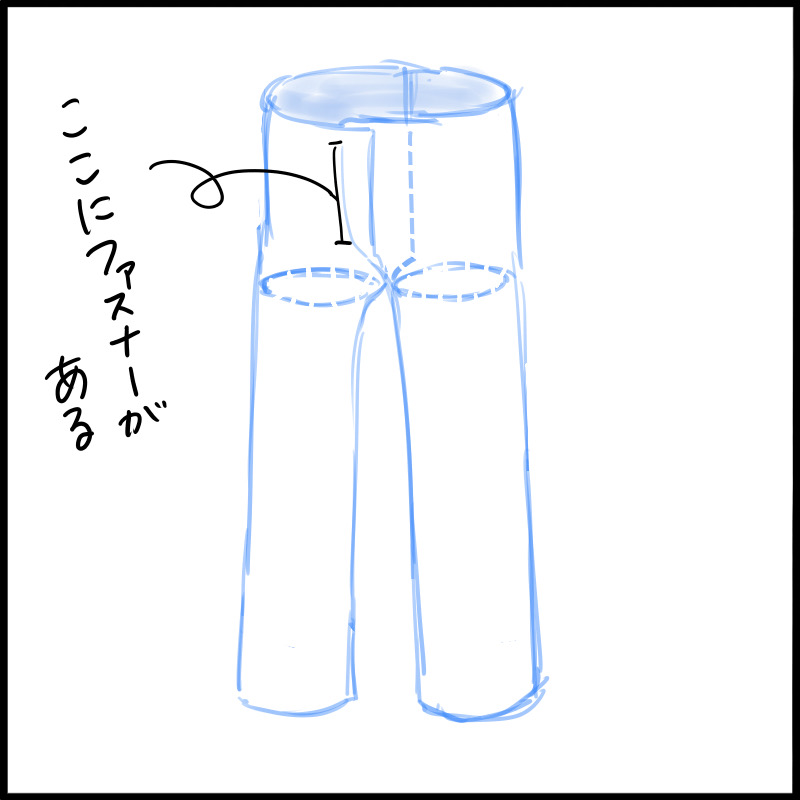
Now that you have a rough idea of how it works, let's get drawing.
2. Let's start with a simple shape
Let's draft a basic frontal shape.
After placing a new canvas, select the Brush tool and choose the "Pencil" brush.
Pencil is good for drafting.
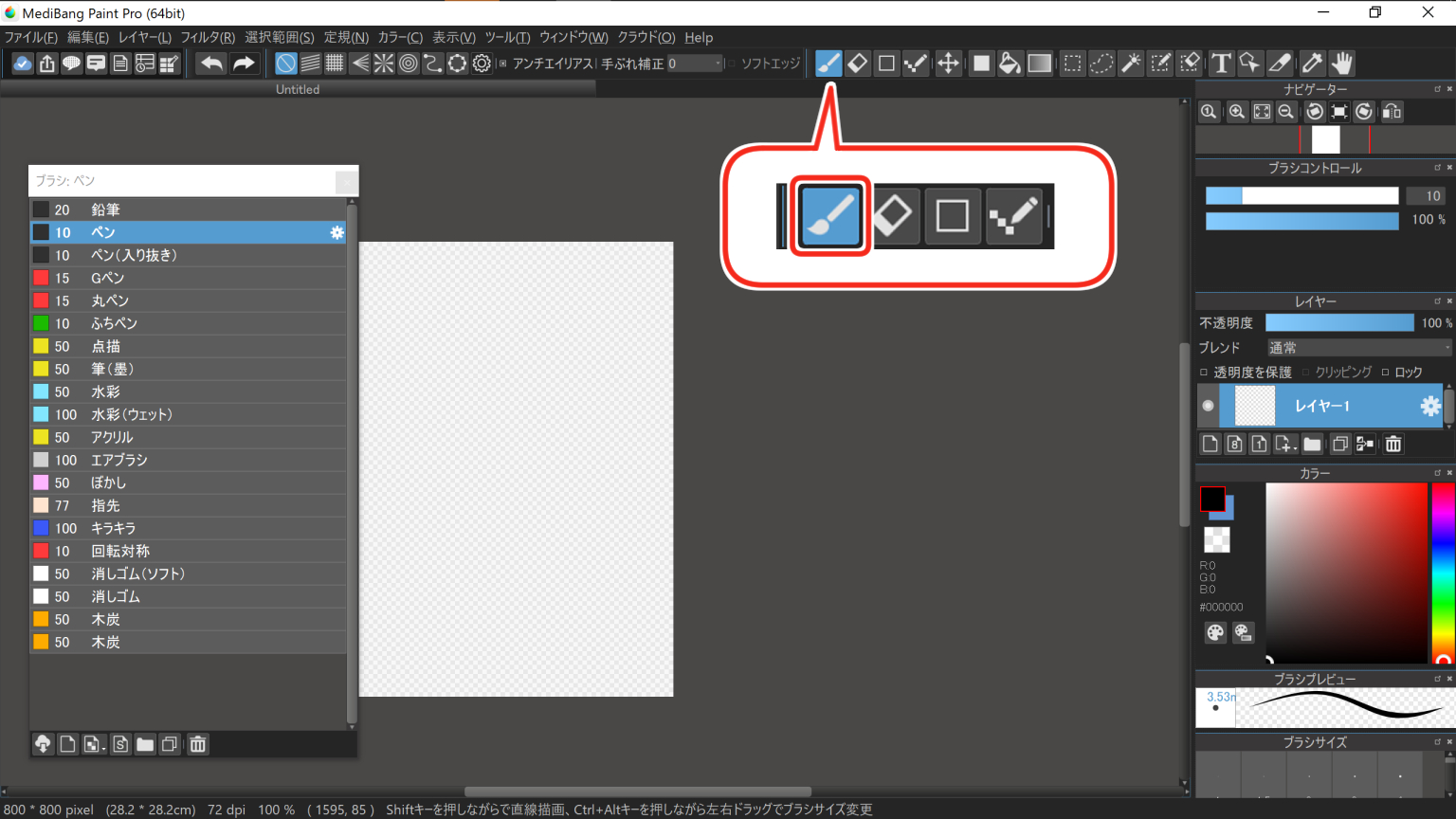
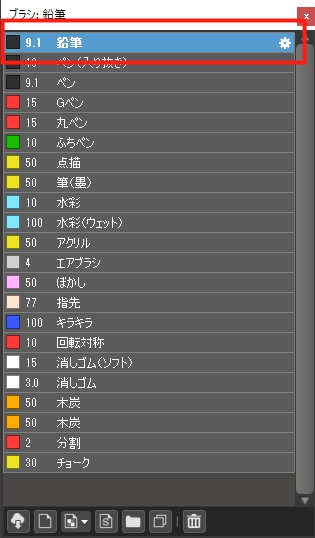
If you are wondering "What is a draft?", please check this page below.
[For Beginner/Smartphone] The First Step! Let's Do Rough Drawing.
First draw some lines to cover the legs, and draw a trapezoid from the crotch to the waist.
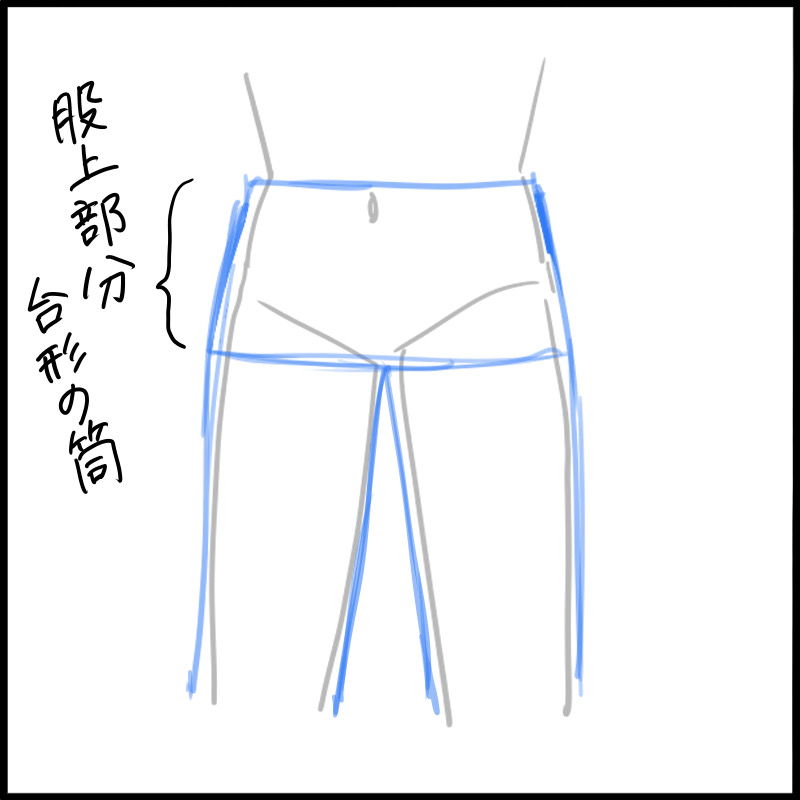
《Tip》
The cloth of the crotch area is in a sharp angle here, but this should change since pants are supposed to be comfortable.
You should make put more curve to the area, even if the cloth furthers away from the body.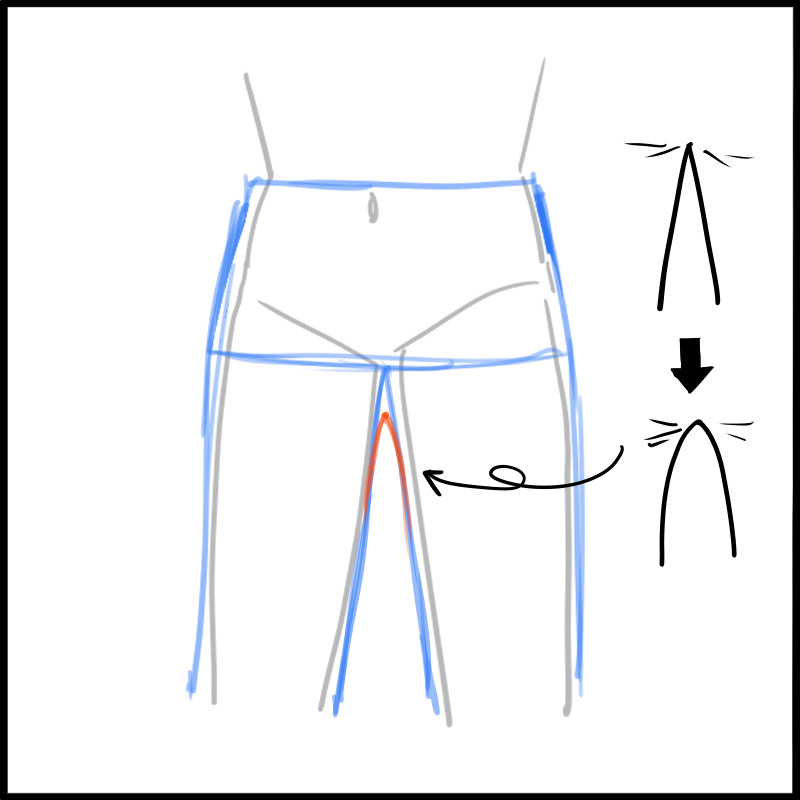
Incidentally, there is a big difference in the features of the pelvis between men and women.
When drawing a woman, make the base of the trapezoid wider to make her look more feminine.
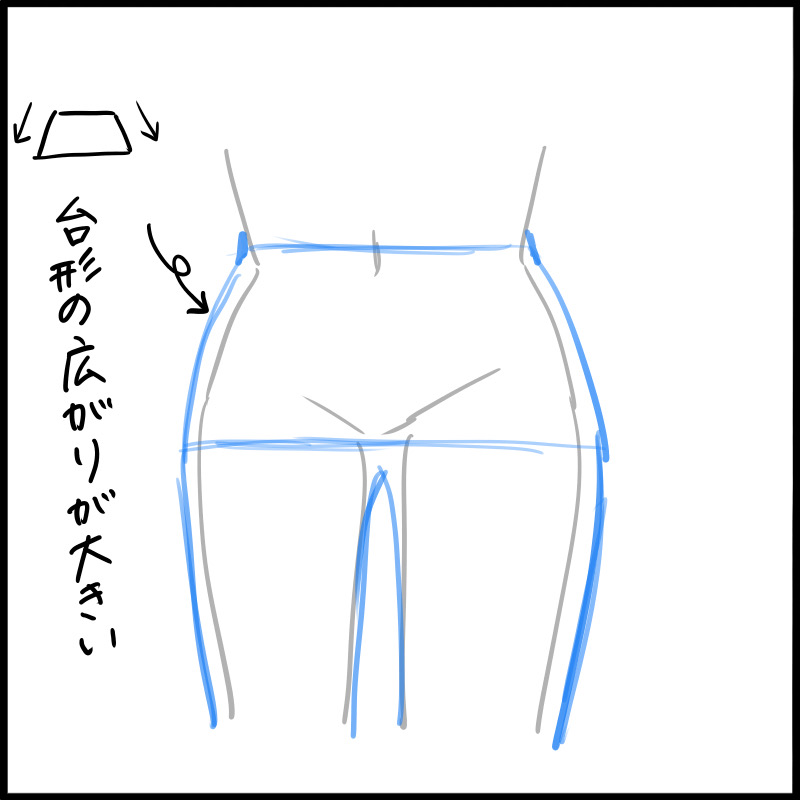
It would be nice to draft the body lines properly, but it would take a huge amount of time to do this for all of your illustrations.
If you are in a hurry or drawing small illustrations, memorize how to draw differently by gender.
3. Let's draw complex poses
From here I'll share on how to draw a variety of poses.
For example, there are many people who are not sure how to draw a sitting pose.
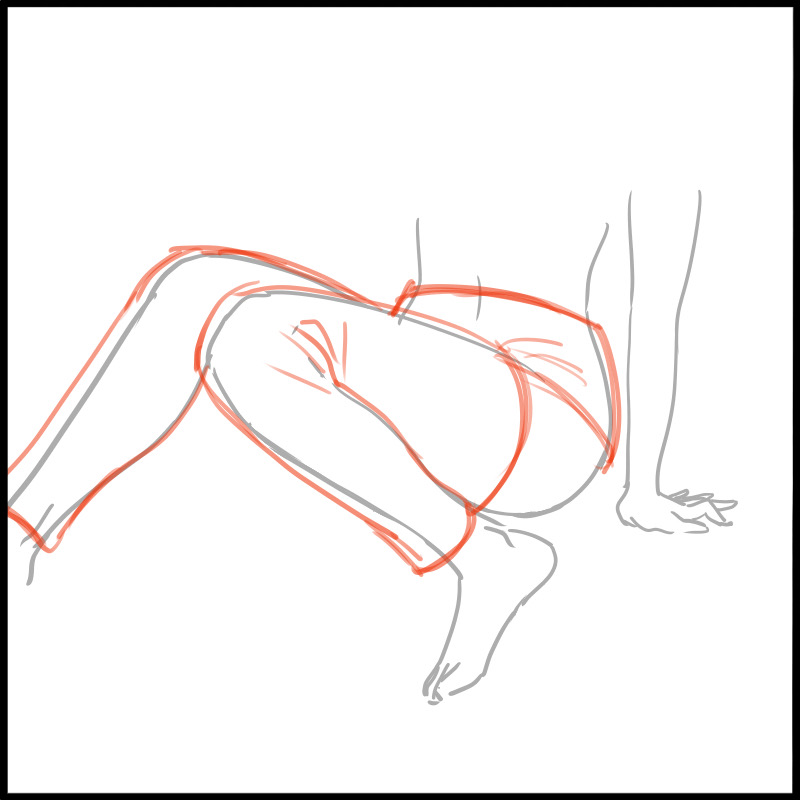
When you are sitting in a relaxed position as shown in the diagram, picture the body bending backward from the waist up.
This will cause the trapezoidal part of the hips to fall backward slightly as well.
If you focus on the trapezoid alone, it looks like its looking up from below.
Think of each leg tube as a separate part, and draw it to cover the legs.
Don't worry if they look detached from the trapezoid!
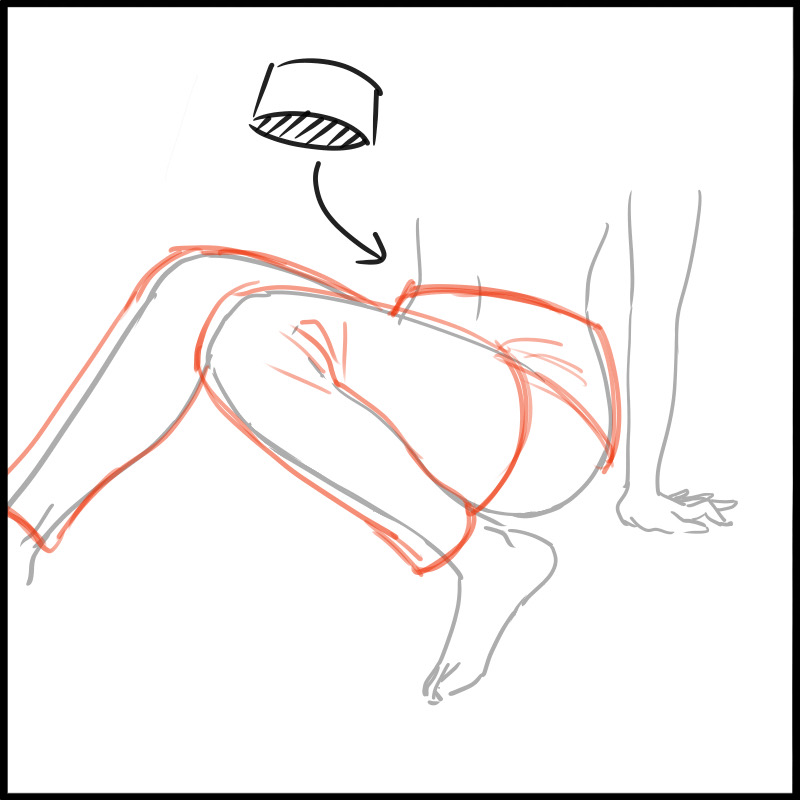
Now we need to connect the detached hips, and erase the lines we don't need.
Add many wrinkles at the border between the waist and the legs.
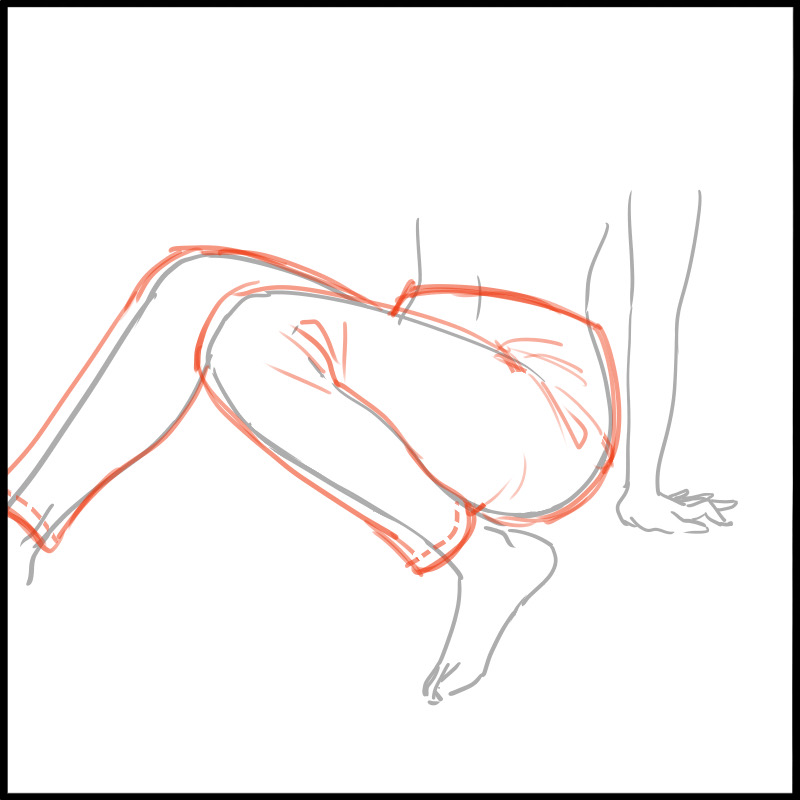
Now draw the pants in the following pose.
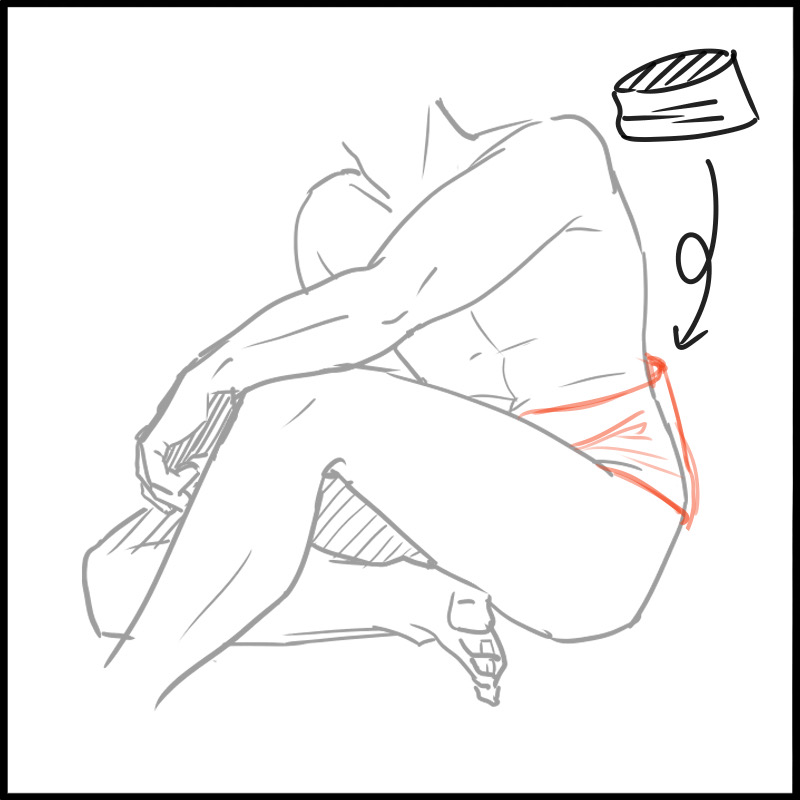
The upper body in this pose is leaning forward, so the trapezoidal shape of the hips is also bent forward (looking down from above).
Since the legs are bent to a near 90 degrees however, the waist that connect to the tube legs (the bottom of the trapezoid) will be very tight.
Therefore draw the trapezoid like a soft sponge, and only compress the abdomen of the waist.
When you're done, draw the tubes for the legs and connect them to the hips in the same way as before.
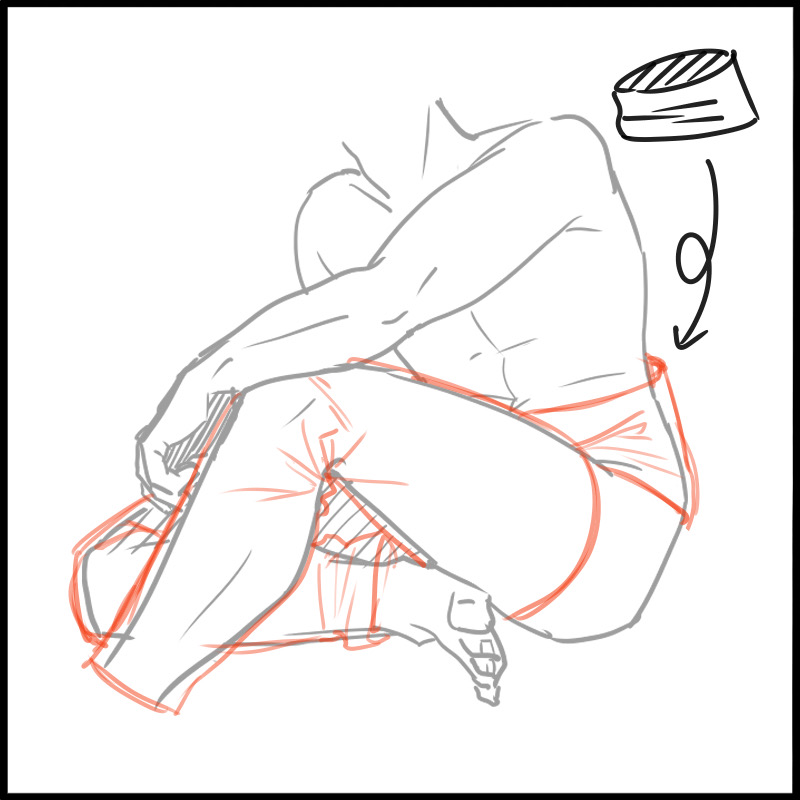
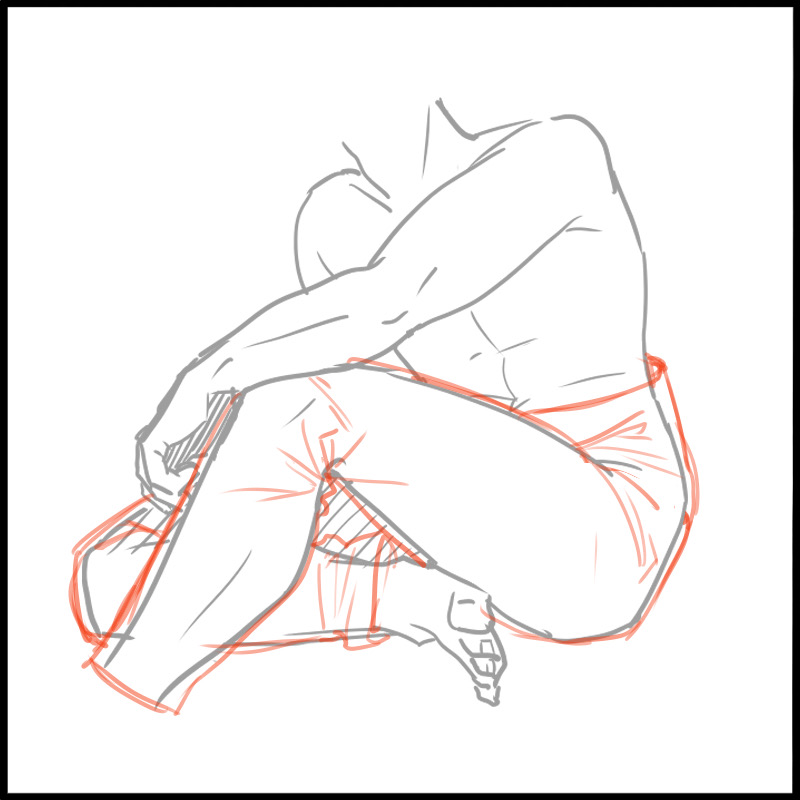
4. Different types of trousers
There are many different types of pants with their respective trends.
let's first look at them from their waist position.
Jeans are the most common pants, but they divide into low-rise jeans with a low opening and high-waist jeans with a high opening.
Adjust the height of the trapezoid to draw them differently.

Draw the trapezoid lower for a low rise and higher for a high waist.
You'll get a high waist pants If you make it close to the abdomen.
Then choose between long pants and shorts by adjusting the tube length and connect it to the trapezoid.
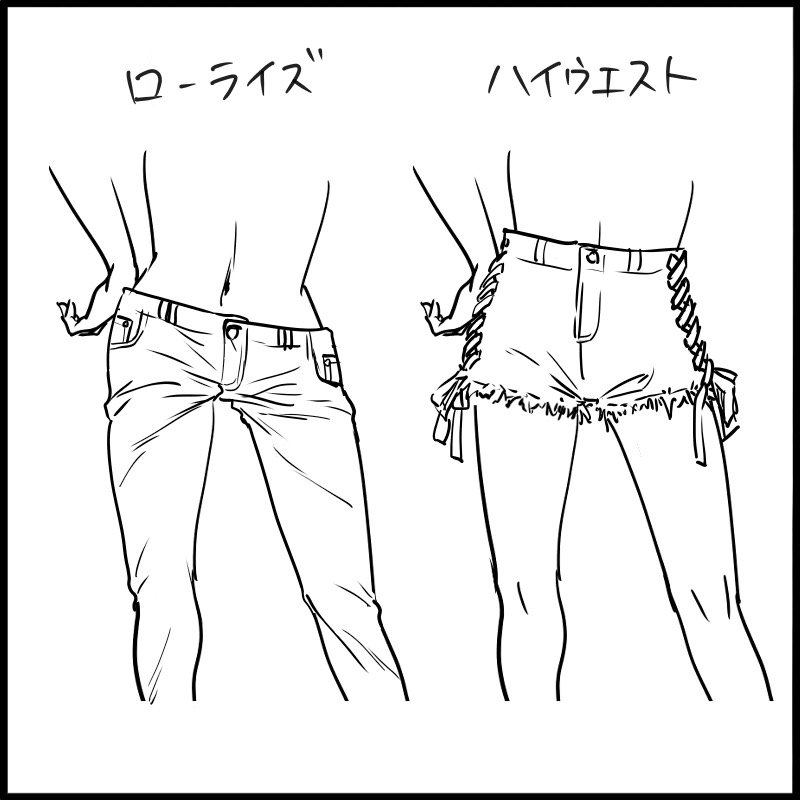
The next part of pants that need to be illustrated is the silhouette.
Let's draw one that is a skinny tights, and another one that has a military like loose silhouette.
These also have trapezoidal shapes, but the tight one should be drawn snugly along the body line, while the loose one should be drawn slightly away from the body line.
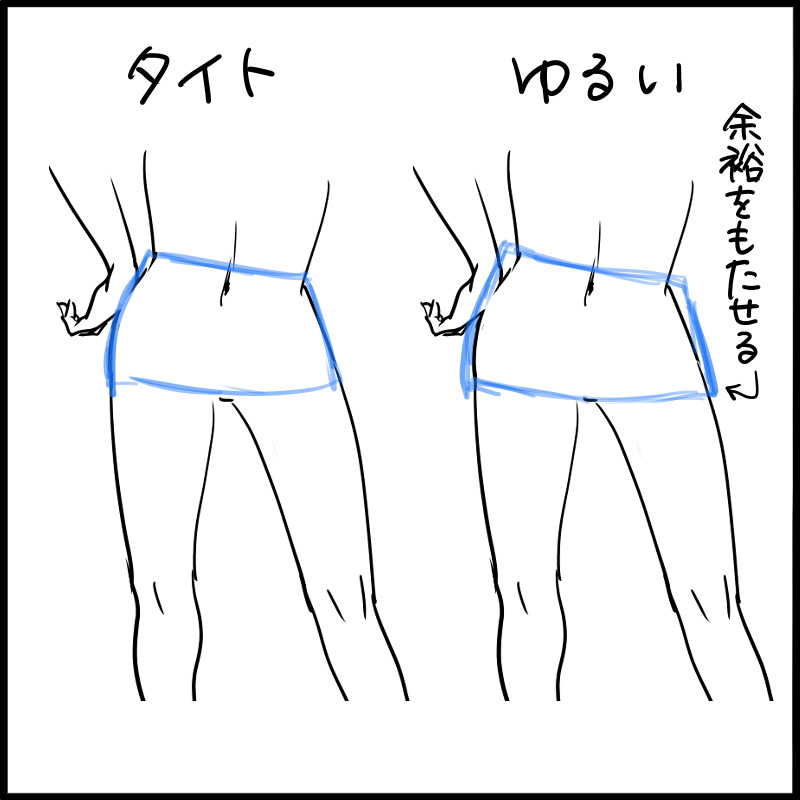
Then add a touch of detail when drawing the tubes of the legs.
Draw the foot tube partially glued to the skin for the tighter one and widely spread out for the looser one.
Try to draw a few small bumps for the tights.
Draw them on the joints of the feet!
Make the pencil brush line thicker and draw a zigzag down the legs for the loose pants as shown in below.
It's okay if they pop out of the tube line!
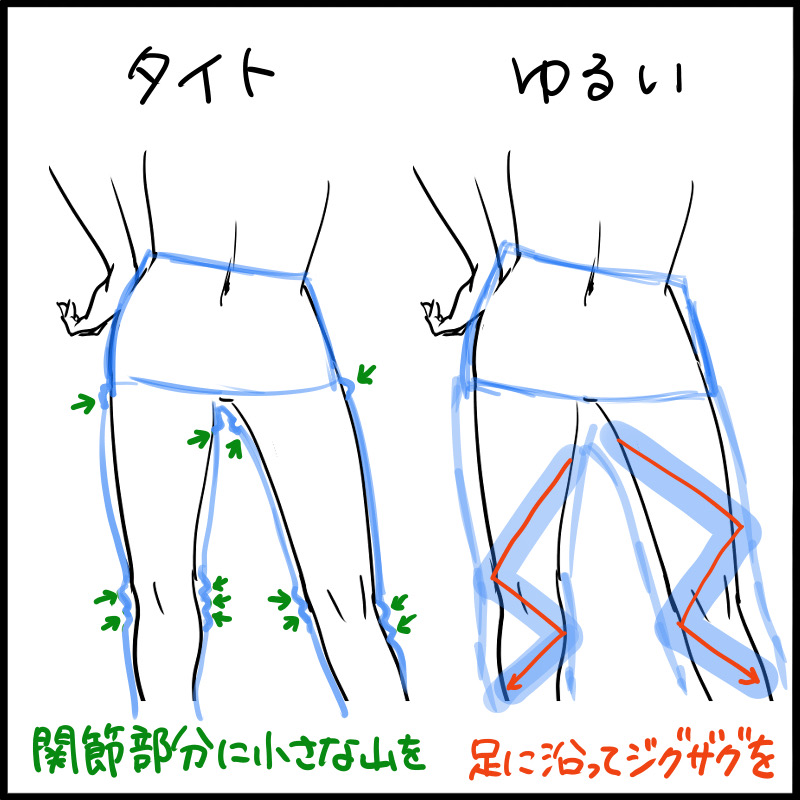
When drawing, keep in mind the following: tight foot tube + small mountain, loose foot tube + zigzag line, respectively.
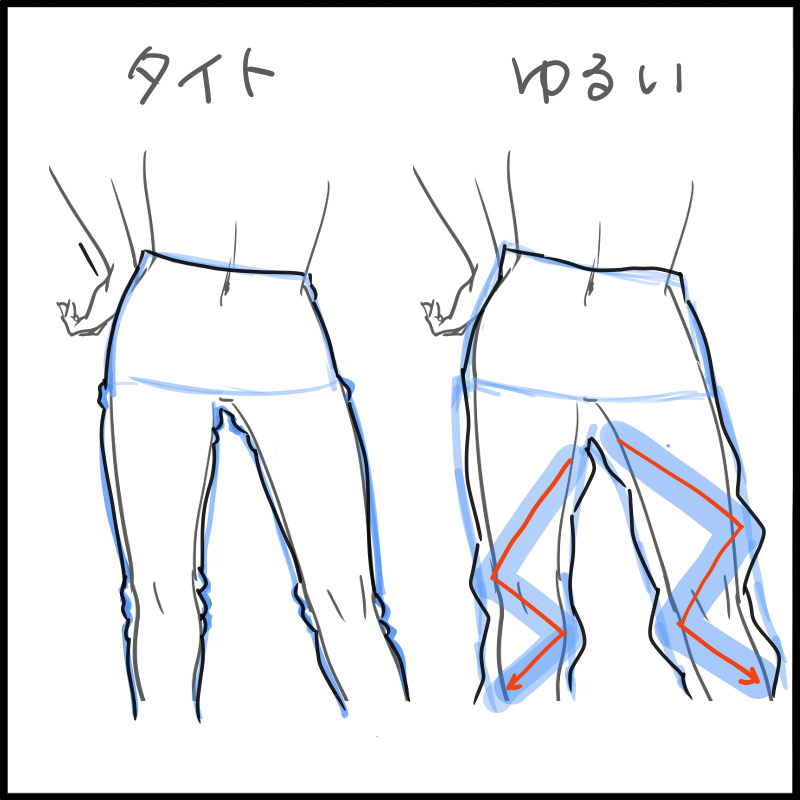
Once you complete the outline, you can add wrinkles to make it look more like pants.
For tight pants, gather the wrinkles where the small mountains, or joints are in order to emphasize the silhouette.
For loose pants, you can draw the wrinkles all over, but make sure to keep the direction of the wrinkles consistent to represent the weight of the fabric as it hangs down.
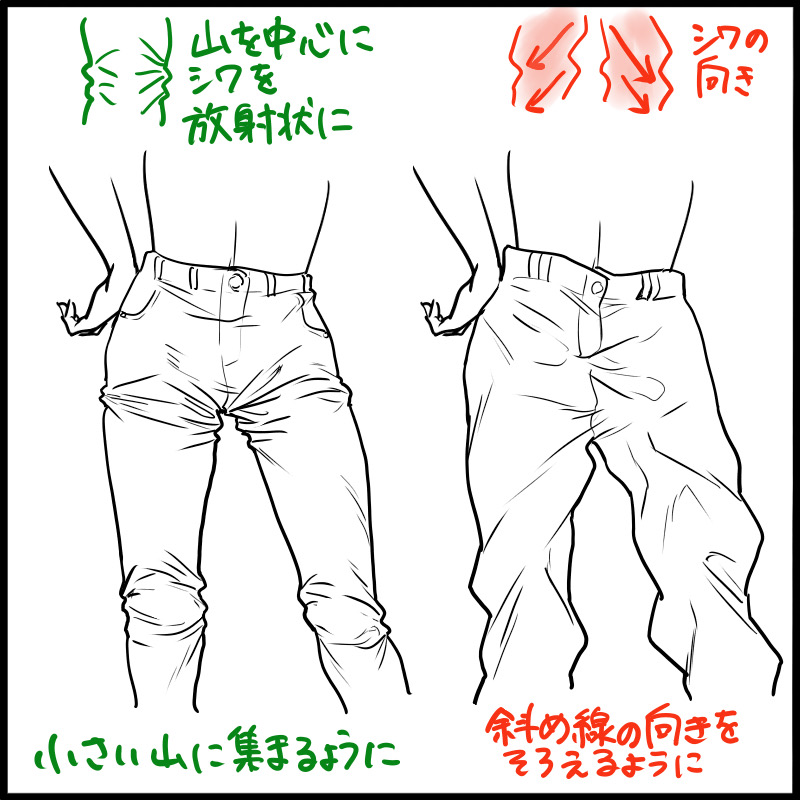
5. Summary
How was it?
By combining basic drawing techniques, poses, and types of pants, you can illustrate for all kinds of scenes.
Please look at clothing stores and magazines on a regular basis and study which type of pants fits the atmosphere of your illustrations.
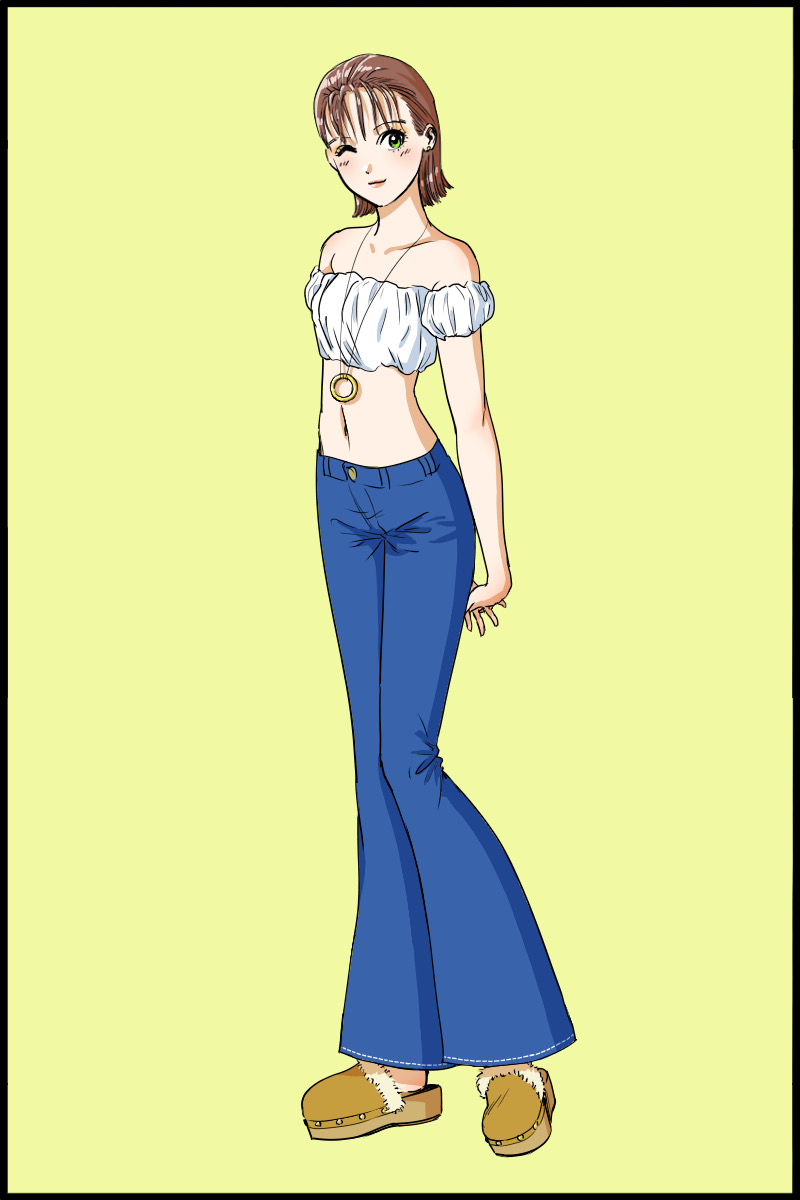
(Text and pictures by Hiroshi Takeuchi)
Source: https://medibangpaint.com/en/use/2021/08/how-to-draw-pants/
0 Response to "How to Draw Pants Boy"
Post a Comment